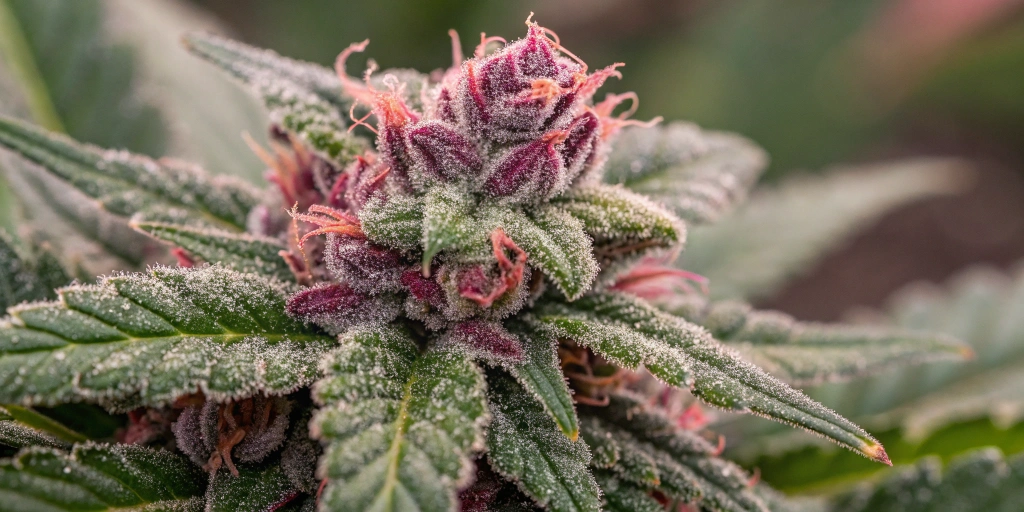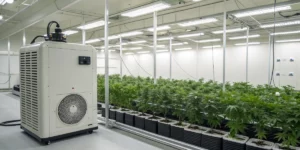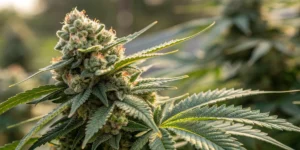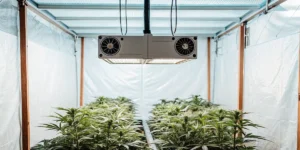Strawberry Gorilla Auto strain: Exceptional Genetics and Effects
Origins and Genetics
Strawberry Gorilla Auto strain originates from a meticulously engineered genetic blend that fuses robust indica traits with a burst of sativa energy and a signature strawberry aroma. This strain is bred to auto-flower, meaning it flowers according to its age rather than changes in the light cycle. Its compact structure and predictable growth pattern make it ideal for both novice and experienced growers with limited space, while its stable genetics guarantee consistent yields and high-quality buds in every cycle.
The genetic lineage of Strawberry Gorilla strain has been refined over several generations to enhance its flavor profile and resin production. Each harvest yields dense, trichome-rich buds that offer a unique combination of sweetness and earthiness. This stable heritage ensures that the strain performs reliably under varied conditions, making it a popular choice for both recreational and medicinal users who appreciate its distinctive, fruity character.
Effects and Potency
Strawberry Gorilla Auto strain provides a balanced high that uplifts the mind and gently relaxes the body, creating a harmonious state that is both energizing and soothing. With THC levels maintained at a moderate to high range, users experience a clear-headed, stimulating buzz that enhances creativity while still offering subtle physical relaxation. The effects are smooth and well-rounded, making it a versatile strain for daytime use without overwhelming sedation.
Its potent yet balanced impact is complemented by a rich flavor profile that bursts with sweet strawberry notes, intermingled with earthy undertones. This combination delivers a sensory experience that is as refreshing as it is effective, ensuring that every session with Strawberry Gorilla strain is both invigorating and thoroughly enjoyable.
Environmental Requirements for Growing Strawberry Gorilla Auto strain
Setting Up the Growing Cannabis Space
Creating the perfect grow space is essential for nurturing Strawberry Gorilla strain. A well-organized area with proper ventilation, controlled lighting, and stable temperature and humidity is the foundation for robust bud production. Whether you’re using a dedicated grow room, a compact tent, or a small indoor setup, the space must be kept clean and equipped with necessary tools such as fans, carbon filters, and timers. This careful arrangement minimizes stress and supports vigorous growth throughout the plant’s life cycle.
Design your grow space to maximize light distribution and airflow. A meticulously arranged environment not only improves plant health but also simplifies routine tasks like watering and monitoring. When every element works together seamlessly, managing your grow becomes straightforward and your Strawberry Gorilla strain will reward you with impressive, resinous buds.
Temperature and Humidity
Maintaining consistent temperature and humidity is vital for Strawberry Gorilla strain. During the vegetative stage, keeping temperatures between 70°F and 80°F promotes vigorous growth, while slightly lower temperatures during flowering enhance resin production. Humidity should be kept around 50–60% early on, then reduced to 40–50% during flowering to prevent mold and mildew. These conditions support efficient nutrient uptake and steady growth, ensuring a high-quality harvest every cycle.
Indoor Cannabis Cultivation
Advantages of Growing Indoors
Indoor cultivation offers complete control over every environmental factor, which is especially beneficial for growing Strawberry Gorilla strain. This method shields the plant from unpredictable weather and pests while allowing you to fine-tune light, temperature, and humidity with precision. Managing every aspect—from nutrient delivery to airflow—results in uniform, high-quality buds even in limited spaces, providing consistent results all year round.
By growing indoors, you can maintain a stable environment that maximizes resin production and enhances the unique strawberry flavor of Strawberry Gorilla strain. The ability to control these variables leads to predictable yields and superior bud quality, making indoor cultivation a preferred choice for many urban growers seeking high performance in confined areas.
Lighting Needs
For indoor cultivation, proper lighting is a cornerstone of success. Full-spectrum LED or HPS lights deliver the energy necessary for vigorous vegetative growth and dense bud development during flowering. Position the lights at an optimal distance from the canopy to prevent heat stress while ensuring even coverage across the entire plant. A consistent light schedule, typically using an 18-hour light and 6-hour dark cycle during the vegetative phase and a 12/12 cycle during flowering, is essential for maximizing the potential of Strawberry Gorilla strain and producing high-quality buds.
Outdoor Cannabis Cultivation
Best Conditions for Outdoor Growth
When grown outdoors, Strawberry Gorilla strain thrives in sunny, warm conditions with ample natural airflow. Choose a location that receives at least six hours of direct sunlight each day to enhance terpene production and intensify the strain’s distinctive strawberry flavor. The soil should be well-draining and enriched with organic matter to support vigorous growth and maximize yield potential. Outdoor growing allows the plant to fully express its genetic traits and produce abundant, aromatic buds.
In addition, selecting a sheltered outdoor site that minimizes exposure to extreme weather—such as heavy winds or intense rain—ensures that your crop remains healthy and productive. With careful site selection and management, outdoor cultivation can yield impressive results that rival indoor setups while providing a natural, vibrant environment for Strawberry Gorilla strain.
Growing Season
Timing is crucial for successful outdoor cultivation of Strawberry Gorilla strain. Plant seeds in early spring when temperatures are reliably warm and the risk of frost is minimal. This timing allows the plant to benefit from long, sunny days during the summer and an extended growing season into early fall. A well-planned growing season maximizes light exposure and warmth, leading to robust growth and a plentiful harvest of flavorful, resinous buds.
Monitoring local weather patterns and adjusting your planting schedule accordingly will help ensure that the plant develops under optimal conditions. A carefully timed growing season results in a vigorous crop that fully captures the potential of Strawberry Gorilla strain.
Advantages of Growing Strawberry Gorilla Auto strain
Growing Strawberry Gorilla strain offers several advantages that make it a favorite among cultivators. The strain’s rapid growth cycle means you can harvest multiple times a year, which is especially beneficial for those with limited space or time. Its compact structure and consistent performance allow for high yields even in confined areas. The plant’s robust genetics ensure that it thrives under controlled conditions, delivering impressive, resin-rich buds that embody a unique strawberry flavor.
The predictable nature of Strawberry Gorilla strain makes it an attractive option for both novice and experienced growers. With proper care, the strain consistently produces dense, high-quality buds, and its balanced effects provide an enjoyable, clear-headed high suitable for a variety of settings.
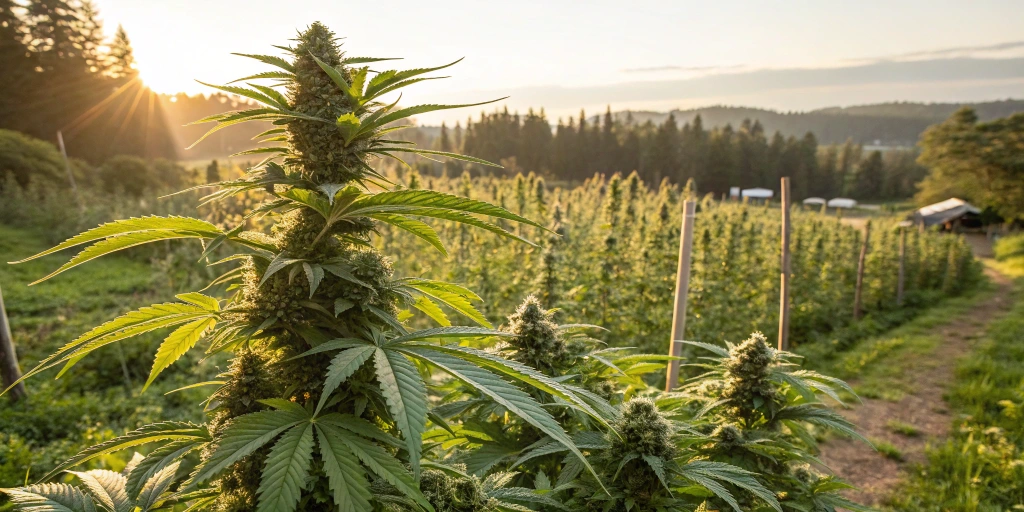
Problems in Cultivating Strawberry Gorilla Auto strain
Overwatering
Overwatering is a common pitfall when cultivating Strawberry Gorilla strain. Excess moisture can damage the delicate root system, leading to root rot and fungal infections that stunt growth and diminish bud quality. It is important to allow the soil to dry slightly between waterings and to use containers with proper drainage. Adjusting your watering schedule based on the plant’s needs rather than following a fixed routine helps prevent overhydration and ensures healthy root development.
Pest Infestations
Pests such as spider mites, aphids, and thrips can quickly undermine the health of Strawberry Gorilla strain if left unchecked. Regular inspections and the use of organic pest control measures are essential to keep these threats at bay. Early detection and prompt treatment are critical to preventing widespread infestations that could compromise both yield and bud quality. Implementing natural predators and organic sprays can effectively manage pest populations and safeguard the crop.
Mold and Mildew
Mold and mildew are significant concerns during the flowering stage, especially when dense buds create a humid microenvironment. High humidity and poor airflow can trigger fungal growth that damages the plant and reduces bud quality. To mitigate these risks, it is essential to control humidity, improve ventilation, and promptly remove any affected areas. Regular inspections and timely environmental adjustments help preserve the overall quality and potency of the harvest.
Similar Strains
Blueberry Kush Auto
Blueberry Kush Auto is a compact, auto-flowering strain featured on buyblimburnseeds.net. It produces dense buds with a rich blueberry aroma combined with subtle earthy undertones. This strain delivers a balanced high that is both relaxing and mood-lifting, making it ideal for growers in limited spaces. Its rapid flowering cycle and consistent yield offer a reliable alternative with a distinctive fruity profile that appeals to both recreational and medicinal users.
White Widow Auto
White Widow Auto is another popular option available on buyblimburnseeds.net. Known for its potent resin production and resilient growth, it produces dense, frosty buds with a classic herbal aroma. The strain offers a balanced high that uplifts the mind while gently relaxing the body. Its ease of cultivation and steady performance make it an attractive choice for those looking for consistent, high-quality results in a compact auto-flowering format.
Northern Lights Auto
Northern Lights Auto is a well-regarded strain featured on buyblimburnseeds.net, celebrated for its fast flowering cycle and robust, resinous buds. It delivers a calming, euphoric high accompanied by a subtle blend of earthy and piney flavors. Its compact nature makes it ideal for small grow spaces, and its predictable yield and quality have made it a favorite among both novice and experienced cultivators seeking reliable and potent auto-flowering genetics.
Week-by-Week Growth Plan for Strawberry Gorilla Auto strain
Week 1 – Germination and Seedling Stage
Soak the seeds of Strawberry Gorilla strain for several hours, then place them between moist paper towels in a warm, dark area until taproots emerge. Once visible, transfer them gently into small pots with well-draining medium while maintaining consistent warmth and humidity to establish a strong root system that sets the foundation for robust growth.
Week 2 – Early Seedling Growth
During week two, the seedlings begin to show their first true leaves and steadily increase in size. Provide gentle, indirect light and keep the soil consistently moist without being waterlogged. This stable environment supports effective photosynthesis and strengthens the young plants, ensuring they are prepared for rapid growth in the upcoming phases.
Week 3 – Continued Seedling Development
In week three, the seedlings grow larger and develop a more extensive root system, with additional leaves emerging. Gradually increase light exposure and maintain a balanced watering schedule to support steady development. This stage is essential for building the plant’s structure and establishing a robust foundation that prepares it for vigorous vegetative growth.
Week 4 – Vegetative Growth Begins
At the start of week four, Strawberry Gorilla strain enters the vegetative phase, with leaves expanding and stems thickening as the plant establishes a solid framework. Adjust light intensity and begin a structured watering regimen, incorporating a low dose of nitrogen-rich fertilizer to stimulate rapid growth and lay the groundwork for future bud production.
Week 5 – Accelerated Vegetative Growth
During week five, vegetative growth accelerates as the plant produces abundant foliage and stronger branches. Continue regular feeding and steady watering while employing low-stress training techniques to shape the canopy, ensuring even light distribution and a resilient structure that will support heavy bud development during flowering.
Week 6 – Preparing for Flowering
By week six, early signs of flowering appear as small buds begin to form and subtle changes in leaf color are noticed. Adjust the nutrient regimen by reducing nitrogen and increasing phosphorus and potassium to support bud initiation, and continue low-stress training while closely monitoring environmental conditions to minimize stress during this transitional phase.
Week 7 – Transition to Flowering
In week seven, the plant transitions into the flowering phase as indoor growers switch to a 12/12 light cycle. Small buds emerge as the plant shifts its energy from vegetative growth to blooming, and nutrient schedules are adjusted to favor bloom-specific supplements while reducing nitrogen. Stable conditions during this phase ensure a smooth shift into robust bud development.
Week 8 – Early Flowering
During week eight, the early flowering stage becomes more pronounced as buds form and gain density. The plant channels energy into thickening its bud clusters, with nutrient delivery fine-tuned to favor phosphorus and potassium. Consistent monitoring for signs of stress or deficiency is essential to maintain optimal bud development in this critical phase.
Week 9 – Mid-Flowering
In week nine, buds become more prominent as resin production increases and trichomes begin to transition from clear to milky. Nutrient management is adjusted to support robust bud development while avoiding nutrient burn, and frequent inspections ensure that environmental conditions remain optimal during this pivotal stage of flowering.
Week 10 – Bud Development
By week ten, the buds are well-formed and continue maturing in density and size as the plant’s resin production intensifies and the aromatic profile deepens. Maintaining careful nutrient management and stable environmental conditions at this stage is essential for ensuring that every bud reaches its optimal potential for a superior final product.
Week 11 – Late Flowering
During week eleven, the plant enters the late flowering phase, with trichomes beginning to shift to include hints of amber. Buds become denser and more resinous, signaling that the optimal harvest window is approaching. Continued balanced nutrient delivery and stable conditions support the final burst of bud maturation, ensuring the plant is fully ready for harvest.
Week 12 – Harvesting Time
In week twelve, Strawberry Gorilla strain is ready for harvest as trichomes display a mix of milky and amber hues and the buds are dense and richly resinous. Carefully cut the plant, trim excess foliage, and hang the branches in a dark, well-ventilated area to dry for 7–10 days, preserving both flavor and potency for the next steps.
Week 13-14 – Curing the Buds
During weeks thirteen and fourteen, focus on curing the harvested buds to enhance flavor and potency. Once dried, transfer the buds into airtight glass jars and open them daily during the first week to release excess moisture, gradually reducing the frequency over the following week. This careful curing process stabilizes the buds and allows them to develop a smoother, richer profile, resulting in a premium final product that showcases the full potential of Strawberry Gorilla strain.

FAQs about Strawberry Gorilla Auto strain
What is the typical THC content of strawberry gorilla auto strain?
Strawberry Gorilla strain typically contains THC levels ranging from 18% to 24%, delivering a balanced high that offers both an uplifting mental buzz and gentle physical relaxation. Its potency is carefully maintained through selective breeding and precise cultivation practices, ensuring that each harvest provides a consistent, enjoyable experience suitable for both recreational and medicinal users.
How long does it take for strawberry gorilla auto strain to flower?
Strawberry Gorilla strain generally flowers within eight to ten weeks after transitioning to a 12/12 light cycle. This relatively short flowering period is ideal for growers seeking quick turnovers and efficient production cycles. The auto-flowering trait ensures a smooth shift from vegetative growth to bloom, resulting in consistent yields that appeal to both novice and experienced cultivators.
What flavor profile can I expect from strawberry gorilla auto strain?
Strawberry Gorilla strain offers a distinctive flavor profile featuring sweet strawberry notes blended with subtle hints of earth and spice. Its aromatic buds deliver a refreshing, fruity taste that evolves on the palate, providing a memorable sensory experience. This balanced flavor perfectly complements the strain’s uplifting, clear-headed high, making it a favorite among cannabis enthusiasts.

